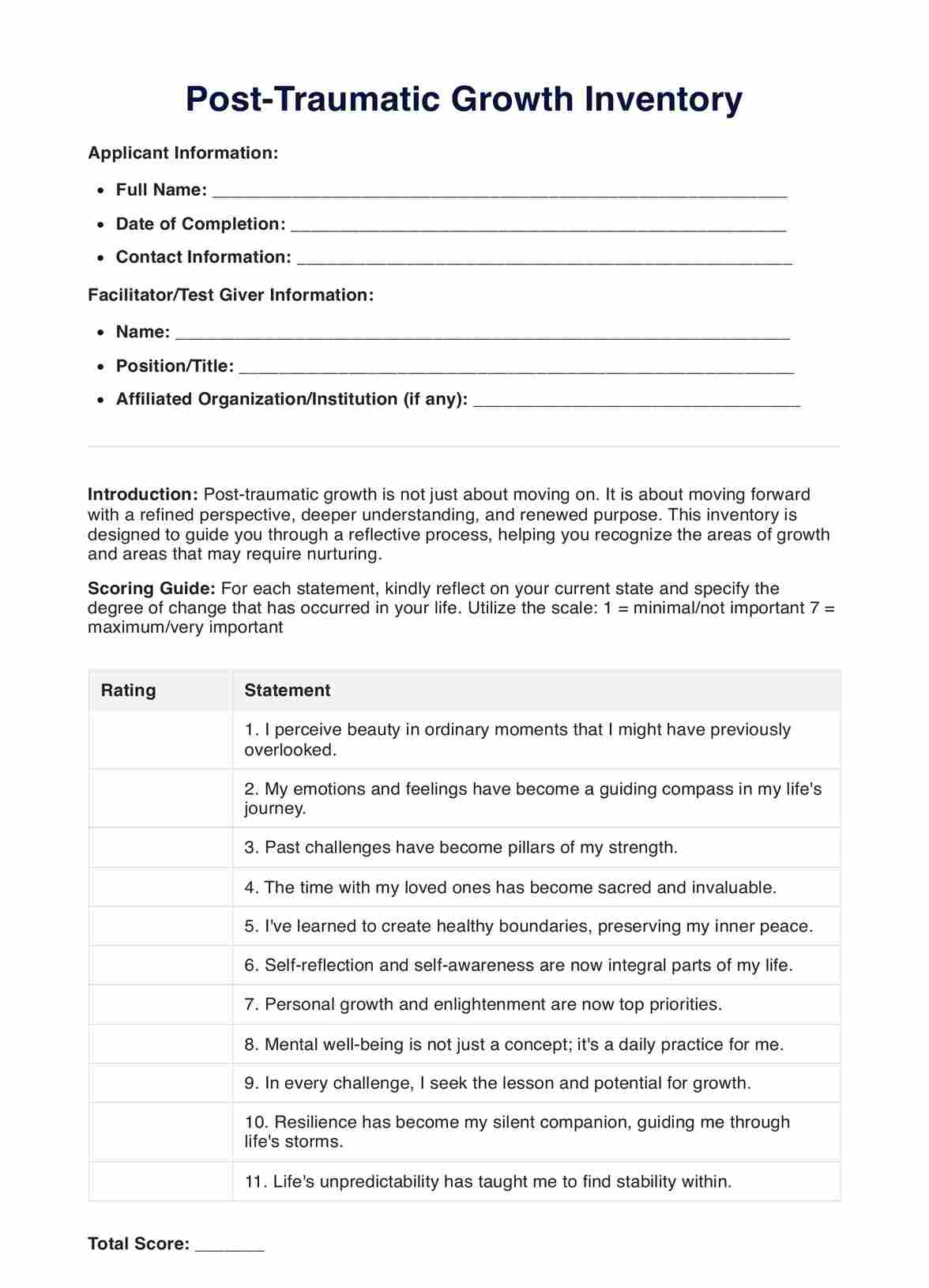The time may vary depending on the individual's pace. However, it typically takes about 30-60 minutes.

Explore healing and resilience with our Post-Traumatic Growth Inventory and Worksheet. It's a transformative tool designed to guide your journey towards recovery.
The time may vary depending on the individual's pace. However, it typically takes about 30-60 minutes.
These tools can help individuals understand and process their traumatic experiences, identify areas of personal growth, and guide discussions during therapy sessions.
They are instrumental during the recovery phase after a traumatic event and can be used as part of a broader treatment plan.
EHR and practice management software
*No credit card required
Free
$0/usd
Unlimited clients
Telehealth
1GB of storage
Client portal text
Automated billing and online payments